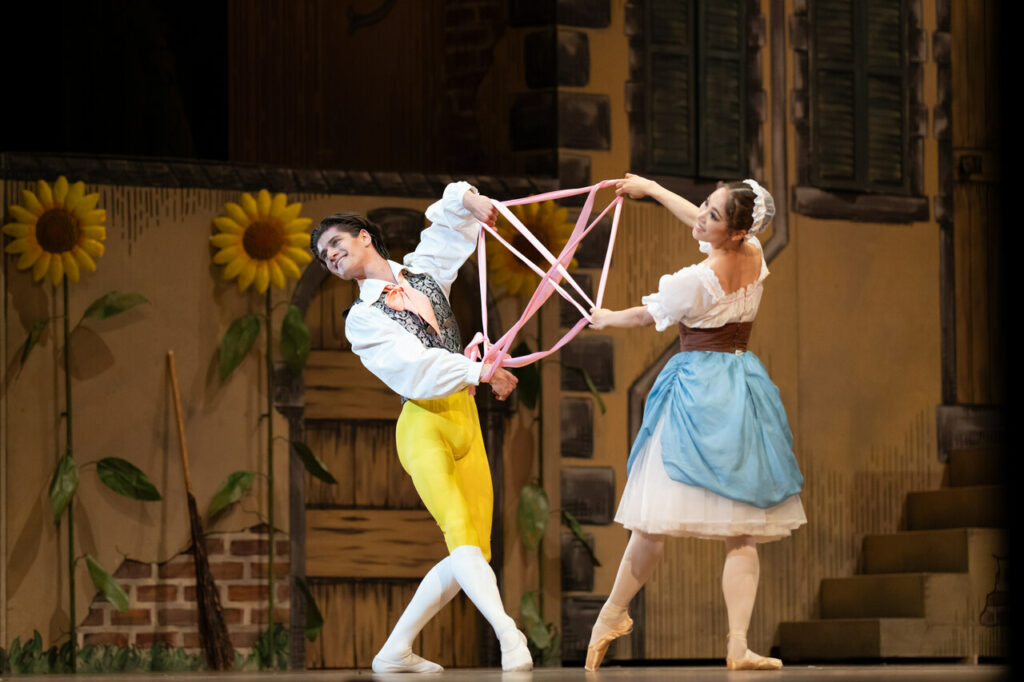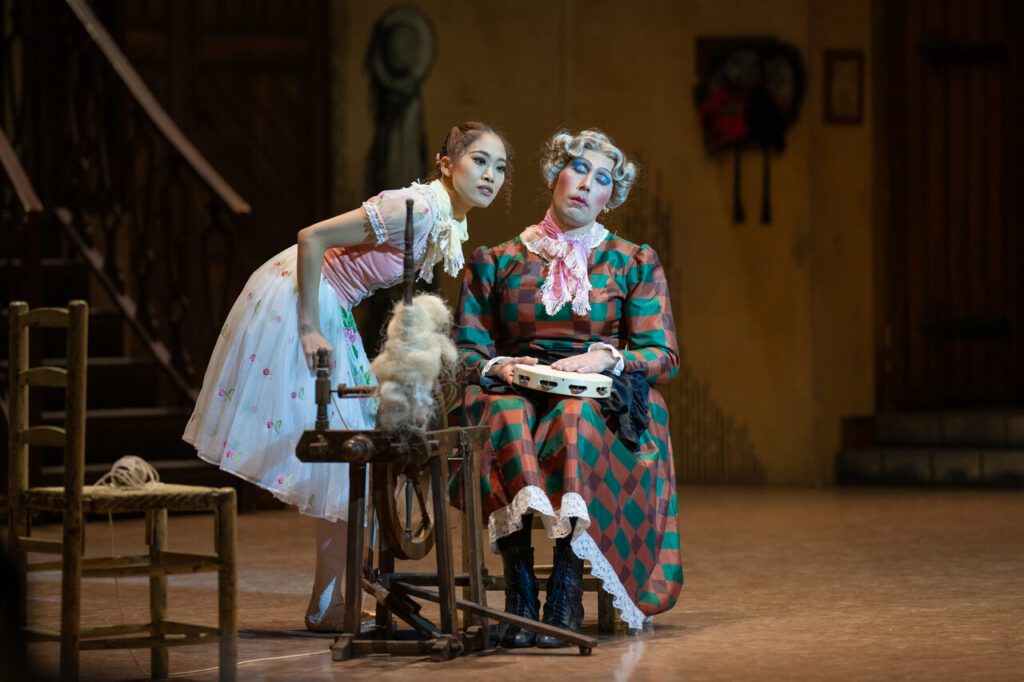The 2023/ 24 season of the Royal Opera House Muscat has proven to be a magical one so far. The season has seen us travel from a small village in Spain, where Rossini set his brilliant comedy The Barber of Seville to the humble farmhouse in La Fille Mal Gardée. This is the famous historic ballet that broke with the tradition of telling tales of the aristocracy and danced the love story of humble country folk. With two nights at the opera house, Frederick Ashton’s choreography transported the audience into a world of love, laughter, and adventure. The production was a unified success. The Czech National Ballet was outstanding, accompanied by the Armenian State Symphony Orchestra conducted by Sergey Smbatyan, it was a polished production. The traditional staging and costumes honoured the original direction of the ballet, setting the scene in a bucolic idyll.
In the aforementioned ballet or any other production showcased during opera season, an often-overlooked role is played by the makeup. Skillfully applied in the spotlit dressing rooms that line the hallways of the opera house, makeup is a vital element of bringing this story together on stage: it helps convey the age of a character; differentiate good from evil; to create the visual identity of Alain, the dimwitted son of the landowner in La Fille Mal Gardée; and, to highlight the age difference between the love-sick daughter and the controlling mother. The use of colour on a character can broadcast the differences between a charming farmhand and an oafish son. There is a farcical element to the theatre of this ballet, and the makeup team has a greater license to exaggerate each role’s characteristics with liberal but artful use of colour.

Amidst the bustle of preparations for opening night, we were fortunate to be invited behind the scenes to speak with the head makeup artist, Lucie Hruskova, and with principal dancer Jakub Rasek, who danced the part of the aforementioned buffoon Alain. Lucie took us through the demands of her job; the team preps makeup and hair at least two hours ahead of stage rehearsals and performances. Widow Simone, for example, wears a series of wigs and particularly heavy makeup. The work for this production is demanding but not too much for her team, they have worked together on much bigger productions than this in the past. With a small yet well-oiled team of three, they work closely to ensure everything is prepared efficiently for each show, allowing half an hour per main character each night, and speedy changes and touch-ups during the performance. Lucie has also received tremendous support from three Omani makeup artists from the Royal Opera House Muscat.
During our conversation, Lucie highlighted an unexpected but important part of a makeup artist’s job. “A key aspect to our job is the ability to communicate well.” She emphasized that open and honest communication between the team was one aspect of this so that they could all support each other where needed, and that it was also central to their relationship with the dancers, as each person and character was unique. She expressed her gratitude to her team, praising their efforts and ability to work together. saying that it was very easy to understand each other, and they worked with great ease. “A good knowledge of working with hair and makeup and a passion for the job is also very important.” She added, hoping to inspire a new generation of artists.
While the makeup artists are some of the more unsung artists behind a production, their significance is no less important for the dancers. For a performer, the makeup process is seen through a different lens, as Jakub Rasek was happy to explain. “Makeup changes depending on the character or type of performance you are dancing. In this ballet, it is seriously important for the makeup to be visible to help differentiate the characters. My character is a fool and an oaf, so the makeup is brighter and more vibrant, particularly designed to highlight my smile, which gives me a perpetual expression of stupid good humour.”

The process of being made he explained, is helpful to most dancers, as it allows them to embody their on-stage character more deeply. “The makeup helps bring out my character further on stage. As a performer you become used to wearing makeup for long periods, even if the time it takes can be slightly uncomfortable, however it is a small price to pay for the chance to bring the performance to life!” This ballet is one that Jakub enjoys being at the centre of, there is a passion and energy to the production which he loves. As Lucie intimated, the people who work in ballet love their work. For Jakub, the opportunity to dance a principal role in La Fille mal Gardée has been a wonderful artistic and professional gift for which he seems both proud and grateful.
Although this is the last classical ballet of the season, the Royal Opera House Muscat programme continues until the end of May, with performances ranging from spectacular family shows such as Stomp and Cirkopolis, to classical concerts and Puccini’s opera La Bohème. We look forward to catching more glimpses behind the scenes of these exciting shows at this wonderful institution.





